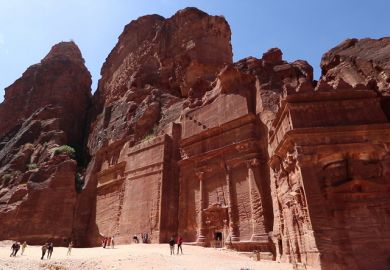This book delves into the rich world of ancient Mesopotamia and focuses on ten cities in modern Iraq. The roll-call of cities is a sonorous one: Eridu, Uruk, Shuruppak, Akkad, Ur, Nippur, Sippar, Ashur, Nineveh and Babylon. Gwendolyn Leick explores the development and nature of these cities from the 5th millennium BC to the 2nd century AD.
Leick's innovative approach combines her knowledge of ancient texts written in cuneiform, "wedge-shaped" script, with an anthropological perspective. Her composite portrayals also utilise the archaeological evidence, including architectural remains, burials and a range of artefacts from pottery to large-scale stone monuments. The brief excavation history of each city is an attractive feature. How did the Sumerians, Babylonians and Assyrians view their own cities? This is partly answered by ancient literary texts, including myths, legends and hymns, and Leick deftly weaves these into her descriptions. Texts are often quoted in English translation, giving a sense of a direct line of communication with the past.
Each of the ten chapters is on a particular city and concentrates on a specific time period. The chapters are arranged chronologically, so that the book also gives an overview of Mesopotamian history. Within this framework, themes including the function of cities, and the distribution of urban power and wealth and the uses of writing, are explored.
Mesopotamian cities had different functions, ranging from religious centres to political capitals, but the centrality of the city in ancient Mesopotamian culture was never in doubt. On a religious level, particular gods were associated with particular cities and were believed to be resident there. Marduk was the city god of Babylon and was believed to live in the city centre in his great temple Esagil. When a city fell to attackers, it was attributed to the city's god or gods moving out and leaving the city unprotected.
Leick conveys a sense of immediacy and the reality of the cities' inhabitants. This is typified by her discussion of a 4th-millennium-BC grave at Eridu where a 15-year-old boy was buried with a dog with a bone in its mouth laid across his lap. Concerning the scholar Belshunu, who lived at Nippur, she highlights the fact that his sons were Plato's contemporaries. Leick's interest in the role of women's and gender issues is also apparent.
There are some minor inaccuracies and omissions. For example, the scholar who studied Shuruppak was Harriet Martin, not Helen Martin. Despite being one of the key cities, Shuruppak is not marked on the introductory map; it is near Adab. German archaeologists were in fact working at Warka, ancient Uruk, in 2001.
Forty-two well-chosen black and white photos and drawings add another dimension to Leick's verbal portraits. Useful reference material includes a chronology and a glossary of archaeological, historical and anthropological terms. For the reader in search of further information, there are notes, references and bibliographies. An index increases accessibility.
The cities of Mesopotamia have had different meanings for each modern generation. Our age is a time of urban growth. Concerns about the future viability of cities, particularly in terms of their environmental and social impact, are growing. Leick's study is a timely one and will appeal to readers interested in the study of urbanism, as well as ancient history, archaeology, anthropology and mythology.
The cover photograph invites the reader to enter Babylon through the gate of the goddess Ishtar built by the Babylonian king Nebuchadnezzar II in the 6th century BC. The book itself acts as a gateway to the fascinating and complex world of ancient Iraq, a world that deserves to be better known.
Frances S. Reynolds is research fellow in ancient history and archaeology, University of Birmingham.
Mesopotamia: The Invention of the City
Author - Gwendolyn Leick
ISBN - 0 14 026574 0
Publisher - Penguin
Price - £8.99
Pages - 360
Register to continue
Why register?
- Registration is free and only takes a moment
- Once registered, you can read 3 articles a month
- Sign up for our newsletter
Subscribe
Or subscribe for unlimited access to:
- Unlimited access to news, views, insights & reviews
- Digital editions
- Digital access to THE’s university and college rankings analysis
Already registered or a current subscriber? Login



